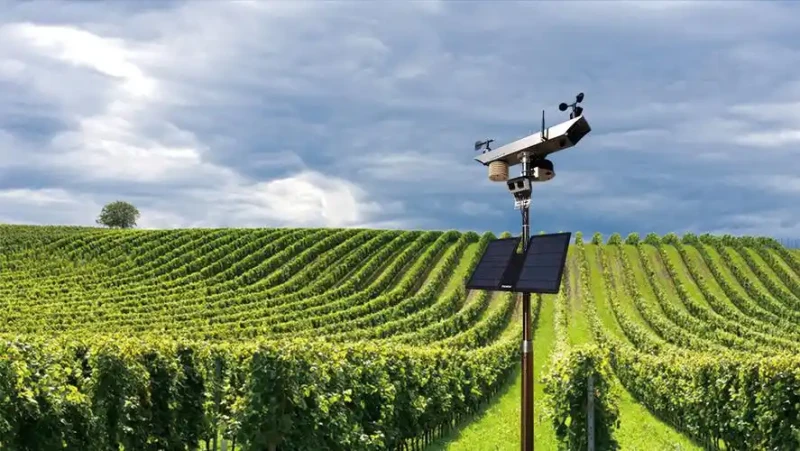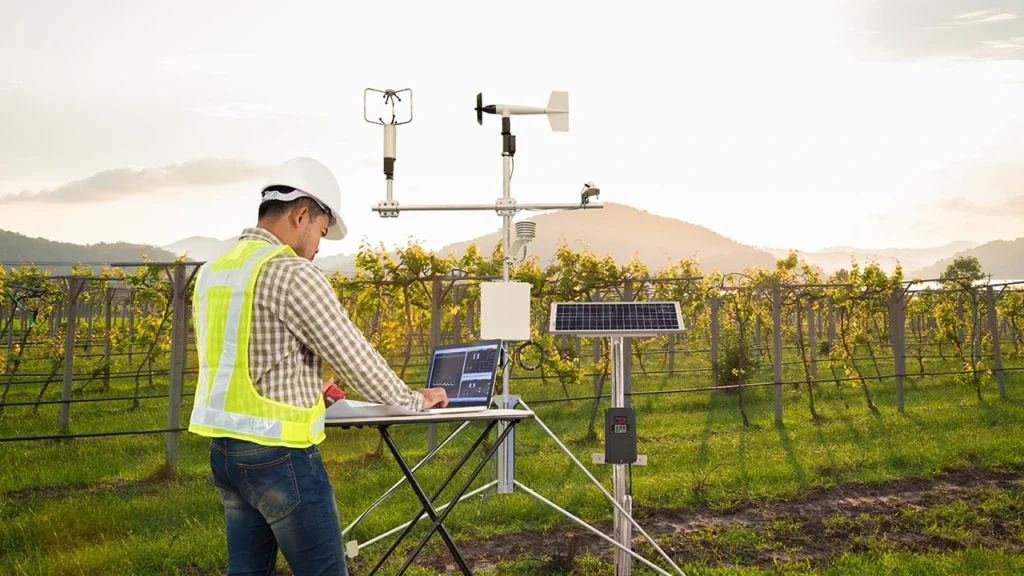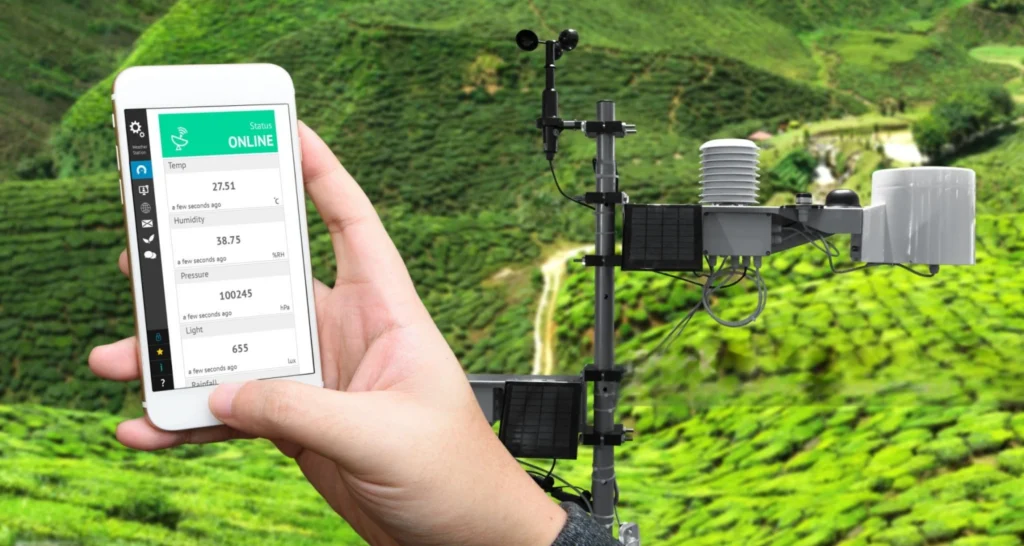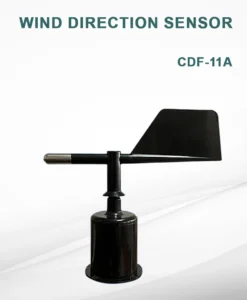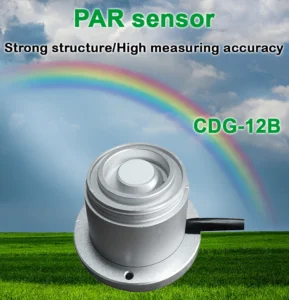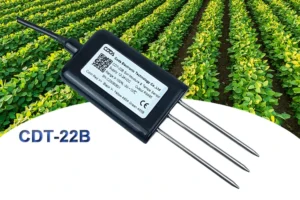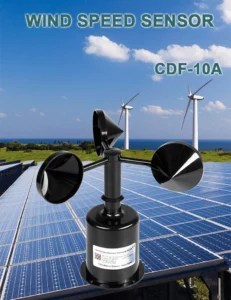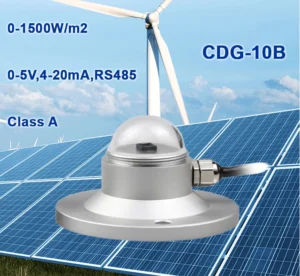Best Environmental Monitoring System
In today’s world, companies see how important it is to make decisions based on data. Central data centers, IDCs, and similar facilities are now key assets for companies to manage their operations.Key metrics for monitoring these facilities aim to reduce CO2 emissions from electricity use. They also aim to reduce risks from environmental factors, like heat or humidity, that could harm equipment.Metrics often include temperature, humidity, energy use, and airflow in the system.
Problems in these facilities’ power or environmental systems can cause issues. These can range from small disruptions, like system crashes, to serious problems, such as data loss. For these reasons, it is important to have an environmental monitoring system that works 24/7.
Understanding Environmental Monitoring Systems
An environmental monitoring system is a full setup. It uses tools like sensors and network technologies. These include wireless communication and remote management. The system tracks environmental conditions in specific areas.
These systems give real-time information. They track temperature, humidity, dew point, vibration, leakage, smoke, light, and CO2 levels. They send timely alerts about bad changes in environments or equipment. These alerts can come through text messages, emails, or alarms.
Environmental monitoring systems mainly measure air quality. They look at the soil and check its salt levels. They check for pollution, watch for erosion, and test the water quality.
Types of Environmental Monitoring Systems
Environmental monitoring is a wide field. It has different types of systems based on their intended purpose. There are four main types of systems.
**Air Environmental Monitoring**
This system checks the air quality both indoors and outdoors. It looks at weather factors. These include temperature, humidity, wind speed, wind direction, air pressure, particle levels, and harmful gas levels.
Uses include outdoor weather stations and indoor systems. They help keep an eye on server room conditions. In the sections ahead, this article delves into server room monitoring as a detailed example.
**Water Environmental Monitoring**
We check water quality by looking at things like water temperature, pH levels, dissolved oxygen, and pollutants. These contaminants can include heavy metals or organic substances. Examples include fish farming systems and setups to monitor rivers.
**Soil Environmental Monitoring**
This system checks the condition of the soil. It looks at factors like nutrient levels, organic content, pH values, and pollutants. Pollutants include heavy metals. Automated irrigation systems are one way to monitor soil.
**Sound Environmental Monitoring**
This tool checks noise pollution levels. It looks at how strong and how often things happen. And it also looks at patterns over time.
It also finds sources of noise. Common systems include those used in homes or airports.
Features and Parts of Server Room Environmental Monitoring Systems
Server rooms are key parts of any organization’s setup. Here’s what you can expect from their special systems for monitoring the environment:
**Data Measurement**
These devices show readings from different probes. These include sensors for temperature, humidity, smoke, water leaks, door access, and motion.
**Data Collection and Storage**
You can watch host log data as it happens. Store this data on your device or in the cloud. Make it easy to see through remote platforms.
**Alerts and Notifications**
When the monitored values go above the set limits, it triggers fast actions. These actions include:
– Flashing sensor lights
– Making alarms go off on devices.
– Sending text or email alerts
– Turn on outside alarm systems, such as sound or light signals.
**Key Parts of Server Room Environmental Monitoring Systems**
– **Monitoring Terminal:** This device has sensors for temperature, humidity, smoke, and water leaks. It also detects movement with infrared technology. It also includes air conditioning control modules, power failure detection units, and alarms for sound and light warnings.
– **Monitoring Platforms:** Includes web-based platforms, “K” platforms, cloud services, or mobile apps for real-time monitoring and control.
**Temperature and Humidity Monitoring**
It is important to keep the right temperature and humidity in the server room. This helps make sure the server works well.
If the server room gets too hot, IT staff get a warning to fix the problem. It is important to prevent overheating. This helps avoid damage to server equipment.
**Temperature and Humidity Sensors**
Most electronic parts in server rooms are made to work well in a certain humidity range. High humidity can lead to hardware issues, such as disk drive failures. This can lead to data loss and system crashes.
On the other hand, low humidity raises the risk of electrostatic discharge (ESD). This can quickly and seriously harm parts.
Keeping the right temperature and humidity helps servers work well and efficiently. When picking a sensor, look for models that are accurate and respond quickly. Make sure they fit your budget.
It is best if these sensors come with a built-in LCD display for real-time monitoring. Coda makes high-quality sensors for computer rooms. This includes models like the 86 temperature and humidity sensor, the 485 sensor, and options with screens.
**Mobile Monitoring for Security**
Server rooms are often left alone during work hours and after hours. Unauthorized access, whether by accident or on purpose, can harm costly equipment and sensitive data. Installing motion detectors is a smart and cost-effective way to monitor activity in a room. They also give quick alerts to IT staff.
It is best to use an infrared motion sensor for this job. A ceiling-mounted installation provides good surveillance of an area that is 3.5 by 6 meters. These sensors offer full 360° infrared detection. There are no blind spots.
They work well in any temperature. They send fast alerts when they see movement. The text now reads: “It also has a tamper-proof alarm feature.”
**Smoke Monitoring for Fire Prevention**
Putting smoke alarms in server rooms makes fire safety much better. They alert IT staff at the first sign of danger. This early warning allows for quick start of disaster recovery steps. This helps reduce downtime and avoid big losses.
Coda’s smoke alarms use RS485 signal output technology. This makes sure they work well and are very responsive. They also have a low risk of false alarms.
These alarms use the main power supply. This means you won’t need to replace batteries often. They consistently keep your equipment safe.
**Water Detection Sensors**
Water can leak from air conditioners, humidifiers, or water pipes in server rooms. Critical equipment and cables are often under anti-static flooring. If there are unnoticed leaks, they can cause short circuits or fires. This can cause big data loss and money problems.
Water leak detectors are important for keeping an eye on server rooms. These sensors check areas near water sources. This includes water pipes for homes and fire systems that may have leaks.
If a leak is found, the system will sound an alarm and show a warning. It also alerts users through a mobile app. Quick notifications help reduce risks right away, ensuring full protection.
